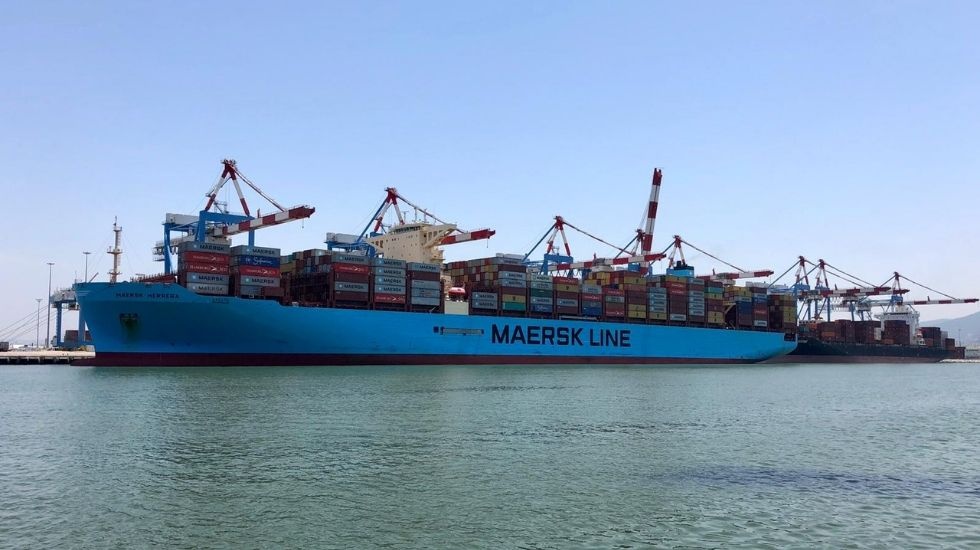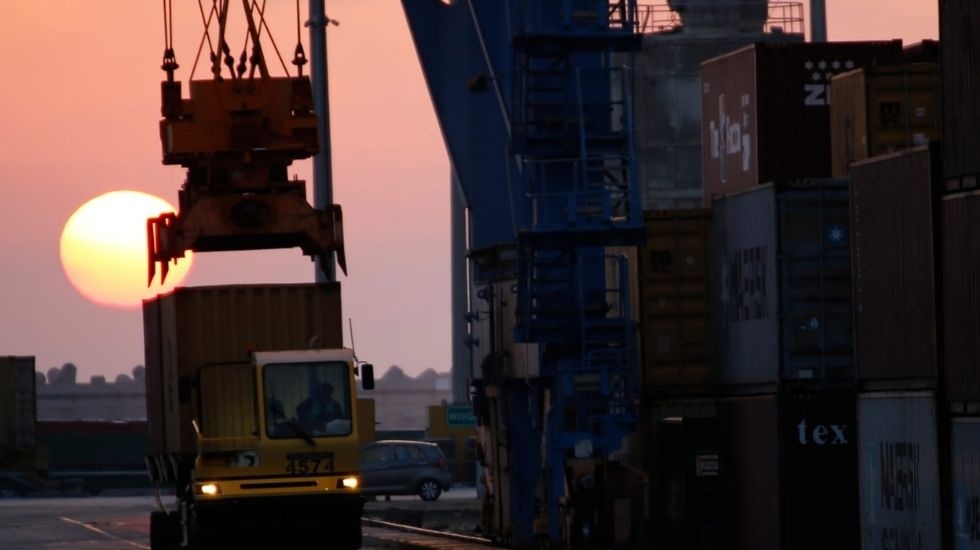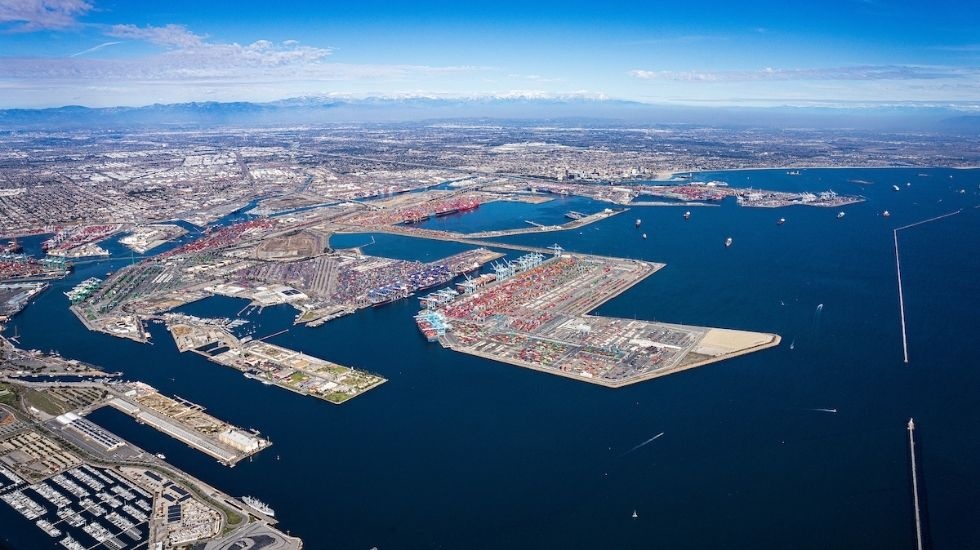
נמל נינגבו-ג׳ושאן מתקשה לשנע מכולות שכן רק פחות מרבע מהמשאיות הרשומות יכולות כעת להיכנס ולצאת משלושת הטרמינלים בביילון. זאת חודש לפני משחקי החורף האולימפיים בבייג׳ין.

נמל נינגבו-ג׳ושאן מתקשה לשנע מכולות שכן רק פחות מרבע מהמשאיות הרשומות יכולות כעת להיכנס ולצאת משלושת הטרמינלים בביילון. זאת חודש לפני משחקי החורף האולימפיים בבייג׳ין.

When we think about international trade, we traditionally think about a person or company producing all elements of a product in their home country and then exporting a final product to a consumer in a different country.

The tensions we are now seeing in the international trading system have been building over decades. Many people are concerned that not everyone is playing by the agreed multilateral rules, that high levels of state support and protection remain in key sectors, and that new multilateral rule-making is not keeping pace with the business realities of today. Against this background, protectionism is on the rise.
But if the overwhelming consensus among economists is that trade is good for firms and families alike, and people trade because it is in their interest to do so, how did we get here? And how can the OECD support policy makers as they build a more open, inclusive and sustainable trading system?
Current challenges facing global trade, and how we got here
Current concerns about the trading system focus both on areas where multilateral trade rules exist but where fair international competition is hindered by continuing high barriers and state support, and areas where trade rule-making has not kept pace with changes to the global economy. Both these “gaps in the rulebook” are highlighted in calls for reform and modernisation of the World Trade Organisation (WTO), across both its monitoring and transparency and its negotiating functions.
Market distortions remain significant in key areas of global trade. For example, notwithstanding the 1995 WTO Agreement on Agriculture, agro-food products overall face higher trade barriers than industrial goods. Tariffs applied to agricultural products are on average three times higher than for industrial goods. Agro-food products are also more likely to face non-tariff measures. These include quotas (banned for other products) as well as regulations which, while aimed at legitimate public policy objectives, can nonetheless sometimes be more trade restrictive than necessary to achieve that objective. Support to agricultural producers remains high, with over two thirds provided via meaures that distort production and trade strongly. There is significant scope for reform of agricultural markets and trade, with considerable gains from even partial reform.
There are also growing concerns about rising government support across a range of industrial sectors, and that current trade rules on industrial subsidies are not able to effectively tackle this support and that new rules are needed to ensure a level playing field.
Part of this concern is related to rapid internationalisation of state-owned enterprises (SOEs). In some countries, SOEs benefit from preferential domestic treatment, or from cheap finance, including from commercial lenders perceiving an implicit government guarantee. While this can sometimes be justified within their national jurisdiction where there are public services these SOEs are expected to perform, the internationalisation of their operations calls for action to maintain a healthy competitive environment.
There are also important areas where multilateral rules are not keeping pace with changes in the global economy. A good example of this is trade in services. Since the 1995 WTO General Agreement on Trade in Services (GATS) the world has evolved dramatically, as a result of technological advances, changing business practices, and deeper global integration. New commitments and updated rules for services trade are needed that reflect 21st century trade.

People trade and governments open markets because it is in their interest to do so. Trade and market openness has historically gone hand-in-hand with better economic performance in countries at all levels of development, creating new opportunities for workers, consumers and firms around the globe and helping to lift millions out of poverty. Relatively open economies grow faster than relatively closed ones, and salaries and working conditions are generally better in companies that trade than in those that do not. More prosperity and opportunity around the world also helps promote greater stability and security for everyone.
Trade has contributed to lifting hundreds of millions of people out of poverty: the share of the world's population living on less than PPP USD 1.90 per day fell from around 35% in 1990 to less than 10% in 2015. Evidence on the impact of trade on poverty in developing countries over 1993-2008 shows that the change in the real income of the bottom 20% of the population is strongly correlated with the change in trade openness over the same period. Developing and emerging economies are playing a more important role today in trade than ever before, contributing to declining inequality among countries (though not always within countries).
Trade has delivered unprecedented access to goods and services, with a revolution in the availability of goods for low income households. Take the cost of purchasing a television set, for example: between 1980 and 2014, the price of a roughly comparable TV set fell by 73%, in part as the result of ambitious trade liberalisation efforts – and the smart television sets we buy today are vastly better than those available in the 1980s. Lower prices are particularly beneficial for poor households, which spend relatively more on heavily-traded products (for example, staples such as food and garments).
Not only does trade lower prices, it also provides jobs for millions of people around the world. In a large country like the United States, around 10% of the workforce is involved in producing goods and services that are exported and consumed abroad, which amounts to around 14 million American jobs. The share goes up to 20% for France, almost 30% for Germany, and 47% for a small open economy like Ireland.
Across all countries, the share of jobs that rely on trade is significantly higher when taking into account “indirect” exports (when a person or company sells a good or service to another actor in the domestic market that uses it as an input in its exports). In some countries like China these can out-number jobs in the exporting industries themselves. These indirect export channels are especially important for smaller firms.
Trade also plays a role in raising incomes and improving overall working conditions. Exporters in the United States, for example, on average pay wages that are 6% higher than non-exporters. And whether the measure is injuries on the job, child labour, informality, or effects on female labour, open economies significantly out-perform closed ones, and labour rights are generally better respected.

חברי ועד בסקטור סוור וטרנספורט ניהלו ביום חמישי האחרון מגעים עם ההסתדרות הלאומית במטרה להעביר את עובדי הנמל לשורותיה. ההסתדרות הכללית: העובדים מעלו באמון שניתן להם. נעמיד אותם להליך משמעתי.

A key challenge for exporters is the scarcity of reliable trade information on markets.

ההסכם נחתם בתום הליך גישור שארך למעלה משלוש שנים ולאור הליכים משפטיים בין הצדדים בנמל. הוסכם על הקמת מנגנון בוררות להכרעה בחילוקי דעות בדבר השכר המגיע בגין עבודה בשביתת האטה, במקום ניכוי שכר חד-צדדי בידי ההנהלה

על פי אומדני מינהל סחר חוץ במשרד הכלכלה והתעשייה, צפוי היצוא לעמוד השנה בין 135 ל-140 מיליארד דולר – גידול של קרוב ל-20% לעומת אשתקד!


מיכל פרנק הודתה בדיון בוועדת הכלכלה כי הבעיה העיקרית קיימת כעת באניות המטען הכללי ואמרה כי אולי כעת, עם תחילת פעילות הנמלים החדשים בתחום המכולות, לנמלים הממשלתיים יהיו יותר עובדים להקצות לטובת פעילות המטען הכללי

נמל אשדוד נערך למערכת הגשם הסוערת שתלווה גם ברוחות עזות, עם שורה של פעולות שיבטיחו המשך תפקוד רציף.

אניות אלה פרושות על פני מסלול של 1,000 מייל לאורך קו החוף של צפון אמריקה לאורך מדינות ארה״ב ומקסיקו. מסע ההפלגה הטיפוסי של אנייה מאסיה לצפון אמריקה שארך שבועיים לפני המגפה התארך כעת ויכול להגיע למעל ל-45 יום
העגורן המוגבה. תוספת עוצמה תפעולית לנמל חיפה | צילום: ארז סימון – גיאודרונס
הגבהה של תשעה מטרים והארכת הזרוע בחמישה מטרים | צילום: ארז סימון – גיאודרונס
העגורן המשודרג (בצד ימין). שלושה עגורנים נוספים יעברו שדרוג דומה | צילום: ארז סימון – גיאודרונס
הקודם
הבא
בחודשים האחרונים הוגבה העגורן מתוצרת חברת kocks הגרמנית ב-9 מטרים ובנוסף, הוארכה הזרוע האדומה לבנה שלו בחמישה מטרים.

נשיא התאחדות התעשיינים בעקבות ההתחזקות המחודשת של השקל: ״היצוא הישראלי בסכנת קריסה מול משבר הדולר והממשלה מתמהמהת. את הנזק ישלם המשק כולו״